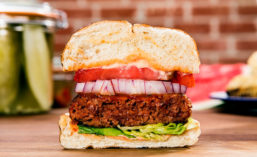Articles by Kantha Shelke PhD, CFS
Clean Label Trends
"Clean label" has become the brass ring for food manufacturers
January 15, 2018
Cold Food Flavors & Textures
New ingredients, strategies preserve cold food flavors, texture
June 14, 2017
Better-For-You Textures
Fat replacers and emulsifiers present both challenges and pathways to creating
better-for-you products
May 30, 2017
Rediscovering Fats & Oils
Fats and oils, once shunned, are now prized for function, nutrition, and flavor
May 15, 2017
Trends in Alternative Food Proteins
Technology is spurring the development of alternative proteins from a variety of novel sources
October 20, 2016
Nut-Free… and Lovin’ It
Alas, nuts—those popular powerhouses of nutrition, taste and texture—but they’re not for everyone
October 13, 2016
Coatings and Inclusions in Food Product Development
Coatings and inclusions are adding snap, crackle, and pop to tasty formulations
August 25, 2016
Making Oil and Water Mix
Nature created oil and water specifically so they would not mix, then peppered the food supply with a whole range of other ingredients to help the two mix well
February 15, 2016
Fat Replacers
Fats play so many roles in foods that replacing them requires an in-depth understanding of every one of their multiple functions
January 11, 2016
Unlock the Future of Food and Beverage Innovation
Are you a leader in research & development? Stay ahead of the curve with Prepared Foods, the premier source of information and insights for today's trend leaders and taste-makers in food and beverage manufacturing.
JOIN TODAYCopyright ©2025. All Rights Reserved BNP Media.
Design, CMS, Hosting & Web Development :: ePublishing










